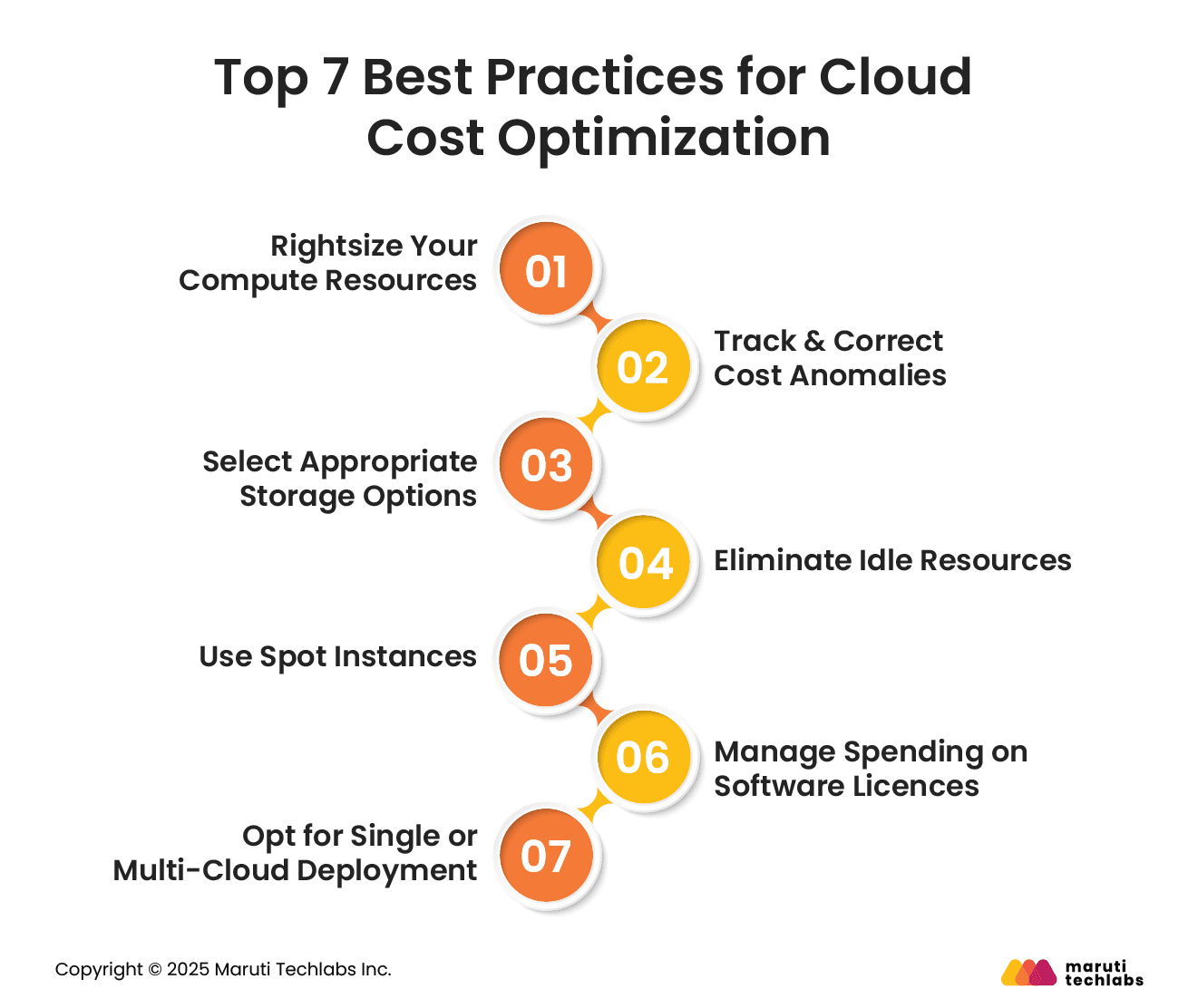

The Hidden Reasons Your Cloud Spend Keeps Growing






As a certified AWS partner, we’ve seen a common story unfold across organizations of all sizes: the move to the cloud starts with ambition and excitement, only to be followed by a growing sense of confusion around mounting costs.
What begins as a cost-effective, scalable solution can slowly become a financial burden if not actively managed. The reasons aren't always obvious. Idle resources, lack of insight, or simply overestimating demand can all quietly drive spend beyond expectations.
The problems with almost every other business we've helped are similar, such as a lack of monitoring and rightsizing resources, which often lead to waste.
This blog explores misconceptions about cloud optimization practices, important facets of cloud overspending, and suggested best practices to help you plan your cloud investments more wisely.
Unmonitored cloud spending can disrupt your budgets in the blink of an eye. Optimization, however, doesn’t mean compromising on performance or scalability. Though essential, organizations fail to leverage optimization to its full potential.
Here are the five common myths preventing companies from achieving maximum cost savings with cloud spending.

Savings plans and reserved instances (RI) are the best methods to save on cloud services. But to opt for them, you must exactly know how many resources you need. Teams often pay through their nose with on-demand pricing in times of need.
Organizations fail to make the best of purchasing models like enterprise purchasing groups, where different departments and teams can club their cloud usage and get bulk discounts.
Many firms believe that savings cannot be observed if they use fewer resources. However, optimization is an option for companies with massive footprints and small and medium-sized businesses. Every dollar you save can be reinvested in your organization’s growth.
A popular myth is that optimization can disrupt existing operations and waste time for engineering teams. To your surprise, optimization activities don’t need much involvement from engineering teams.
Today, automation can be done with manual tasks like discount application, cost allocation, and tagging. This allows engineers to focus on creative innovations rather than cost management.
Sure, your in-house team can optimize your cloud services through ample research and trial and error. But does this approach guarantee cost savings while not compromising performance? The answer is No!
Cloud consulting service providers have experts who specialize in this domain. They possess the knowledge and experience required to understand the requirements of different industries and suggest modifications accordingly. Additionally, cloud service providers' dynamic pricing often makes it difficult to stay on top of the latest advancements.
Cloud optimization doesn’t only aim to reduce costs; its goal is to offer better outcomes for your investments. A well-planned cloud strategy offers alignment with business goals, predictability, waste reduction, and scalability.
Many organizations believe transitioning to the cloud would magically reduce their expenses while enhancing efficiency. However, unanalyzed spending can prove more costly than an on-premise infrastructure.
Here are a few reasons that contribute to cloud overspend.

Businesses always feel they need more resources or keep resources in reserve, following the ‘Just In Case’ mindset. According to a report from Flexera, 24% of software spent in the public cloud was wasted.
Cloud costs increase unpredictably without timely governance and monitoring, disrupting the overall budget. Flexera’s 2025 report concluded that businesses spent 17% more in the past 12 months than their original budget.
Rightsizing resources is imperative. However, this is a cumbersome process that requires collaboration from different teams. Tailoring cloud spending to usage patterns and business goals requires practices like timely instance reviews and autoscaling.
When operating on the cloud, observing cost optimization best practices on the go is crucial. At Maruti Techlabs, our expert cloud advisors understand your business requirements to help you choose the perfect cloud computing model.
At first glance, it’s cumbersome to make sense of the intricacies of your cloud bill. Our team’s primary goal is to ask necessary questions to understand their cloud ecosystem and device cloud strategies accordingly.
Here are seven cost optimization practices that can be universally applied to enhance their FinOps strategies.
AWS offers myriad (about 300) types of instances that you can choose from to suit your workloads. Selecting the right cloud instances from so many options is cumbersome even for experienced cloud architects.
Our constant observation has been that project leads and developers (with no ulterior interest in mind) have selected the wrong instances while clubbing suboptimal instance families together. This has resulted in oversized instances that are just dead investments.
At times, developers also leave idle resources running and forget about them, causing additional expenses. Therefore, we believe that rightsizing your EC2 infrastructure and constantly monitoring it are the keys to cloud resource optimization.
Cloud usage can vary throughout the year. However, it’s essential to monitor any unexpected spikes in usage or spending. Such spikes in costs should be actively addressed to avoid disruptions with your cloud budget.
Numerous storage options exist for cloud-native apps. Some viable options include object storage, network storage mounts, and block volume disks that mount directly to compute instances.
You can choose from multiple storage types due to the flexibility of selecting the right storage environment. Post-evaluation, you can save significantly by opting for different storage options.
Additionally, it’s also important to choose the perfect storage class for your different data types. For instance, an archival storage tier like S3 Glacier can be used for infrequently accessed backups. As opposed to a performant tier created for frequent access, this option can be substantially cheaper.
Cloud providers charge the same amount for idle resources whether you use them or not. These resources can be identified and merged to reduce costs. For example, if you’re being charged 100% for CPU utilization while using only 10%, significant resources are wasted.
One doesn’t have to save and pay for idle resources during events such as traffic overload or busy seasons. Cloud providers offer load balancing, auto-scaling, and on-demand capacity scaling options when needed.

Last-minute purchases are termed as Spot instances. Providers like AWS sell their leftover resources at low prices. Though cheap, these resources aren’t always available and can be sold quickly.
Spot instances work best for jobs that can be terminated anytime, or batch jobs, but not crucial, time-consuming ones.
If your deployment depends on licenses or proprietary software subscriptions, their costs should be considered in your cloud budget. You could purchase them manually or from the service marketplace in the cloud provider’s control panels.
Opting for open-source alternatives instead of licensed software subscriptions is a preferred way to reduce your overall cloud expense. These savings can then be leveraged to enhance other infrastructure areas.
One can make large-volume purchases with a single vendor and enjoy considerable discounts. On the other hand, multi-cloud deployments can be a bit expensive but help increase availability and avoid vendor lock-in.
Switching cloud platforms is a tedious process that demands specialized knowledge and expertise. Therefore, it is crucial to evaluate whether a single vendor or a multi-cloud environment is suitable for your organization’s needs.
One of our clients, a fast-growing enterprise, recently migrated from a monolithic architecture to microservices. The company scaled to over 70 microservices, requiring secure storage and access to secrets, tokens, and configuration data.
Our client used AWS SSM Parameter Store to manage secrets and configuration after migration. Initially free, this service began incurring significant costs as microservices started polling it every 10 minutes to fetch updates, without any usage optimizations in place.
Maruti Techlabs identified the issue and implemented a push-based, caching-enabled architecture:
Here are the benefits observed by our client after implementing the solution we devised.
To avoid cloud overspending, organizations must adopt a strategic approach that includes regular monitoring, rightsizing resources, and implementing cost-effective purchasing models. By proactively managing cloud usage, identifying cost anomalies, and selecting appropriate storage and compute options, businesses can significantly reduce expenses without compromising performance.
At Maruti Techlabs, we specialize in cloud application development services. Our expert team assesses your cloud infrastructure, identifies inefficiencies, and implements targeted solutions to streamline operations and maximize ROI. We also offer cloud security services to help safeguard your environment while optimizing cost and performance.
Partner with us to gain actionable insights, minimize waste, and achieve sustainable cost savings across your cloud ecosystem. Want to get started? Connect with us today to optimize your cloud spending effectively. If you’re looking for cloud application development in New York, our team is well-equipped to help you design, build, and scale solutions tailored to your business needs.
To optimize cloud computing costs, implement strategies such as setting budgets, right-sizing resources, eliminating idle assets, leveraging spot instances, and selecting appropriate storage options.
Additionally, establishing robust governance and monitoring practices is essential to prevent overspending and ensure efficient resource utilization.
Reduce Cloud Run costs by right-sizing services, using spot instances, optimizing idle resources, implementing auto-scaling, monitoring usage patterns, and leveraging cost management tools for better budget control.
Common challenges in cloud cost optimization include a lack of visibility, overprovisioning, and inefficient resource management. These can be mitigated by implementing FinOps practices, right-sizing resources, and leveraging an automation tool.
To stop Google Cloud charges, delete resources, disable billing, or shut down projects. Monitor costs using the billing dashboard and set budget alerts to avoid unexpected expenses.


